The Art of Flower Drying: Techniques and Tips for Preserving Blooms
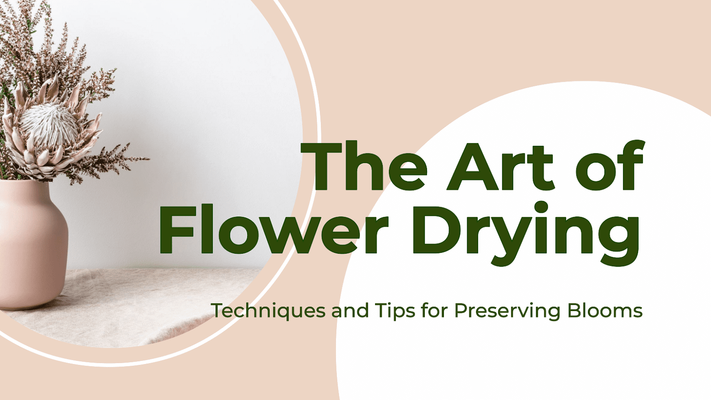
The Art of Flower Drying - key points
- Artistic Legacy: Flower drying is an ancient practice, offering timeless keepsakes of meaningful moments and enhancing aesthetics in various settings.
- Diverse Techniques: A spectrum of drying methods exists, from conventional techniques like air drying and pressing to contemporary approaches such as microwave and freeze-drying.
- Strategic Selection: Selecting appropriate flowers is essential, accounting for factors like seasonality, durability, color, and employing proper cutting and preparation methods.
- Creative Applications: Dried flowers find new life in mixed media art and inventive displays, merging traditional and modern artistic boundaries for unique expressions.
- Lasting Beauty: Preserving the color and longevity of dried flowers necessitates proper storage conditions and occasional refreshing to maintain their aesthetic appeal.
- Sustainability and Ethics: The art of flower drying considers sustainability, encompassing the environmental impact of techniques used and ethical harvesting practices to align with responsible floral arts.
The Importance of Flower Drying in Art and Decoration
Flower drying isn't just a way to preserve the life of these beautiful natural elements; it's an artistic practice with deep roots in various cultures. In many cases, dried flowers serve as lasting tokens of significant moments or seasons. They're not just "dead flowers"—they're enduring symbols that continue to bring beauty and significance to spaces and occasions long after their fresh counterparts would have wilted.
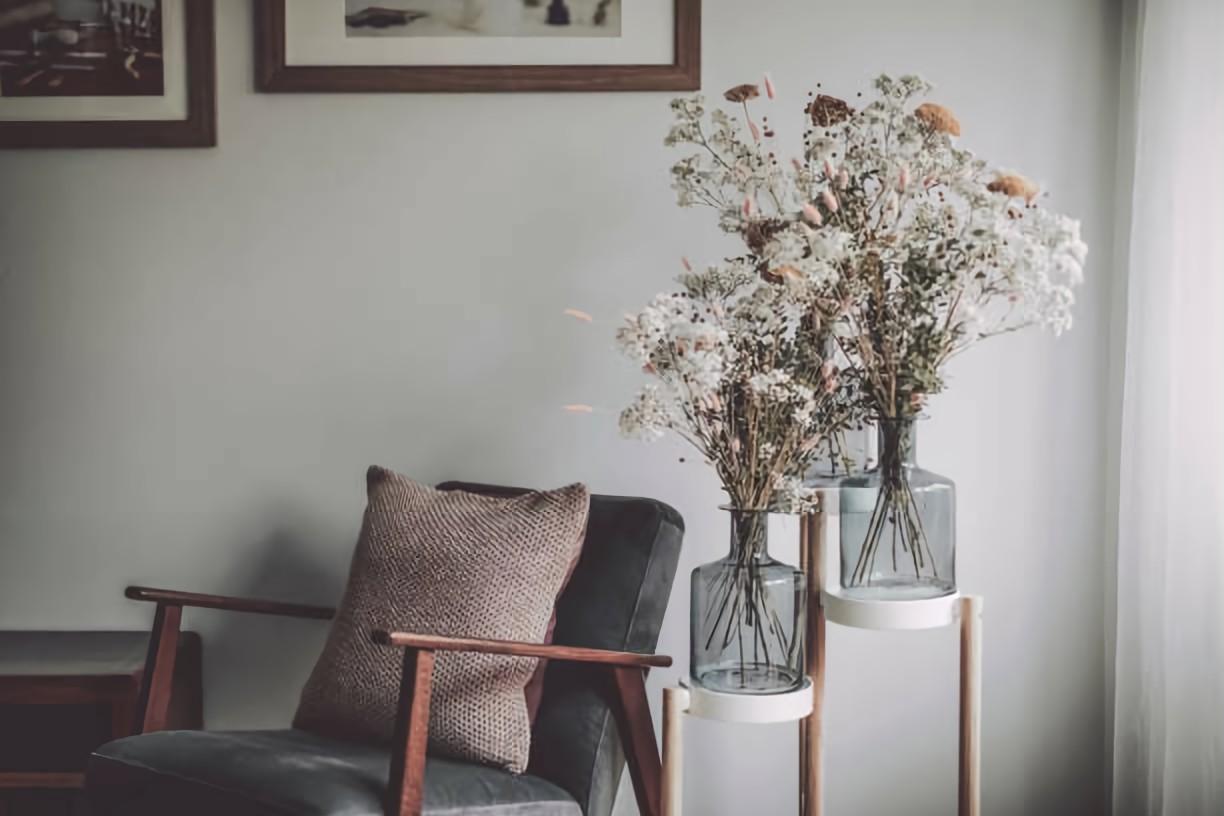
Overview of Various Drying Techniques
Traditional techniques like air drying and pressing have been around for over millenniums, in fact the oldest preserved flowers were found in a Roman tomb in Egypt and are over 2000 years old. They were found to be faded, but still intact, but modern methods like freeze drying offer exciting new possibilities.
Historical Context and Modern Applications
The art of flower drying dates back to ancient times, where blooms were often preserved for medicinal and ceremonial purposes. Today, dried flowers have found their place in everything from interior decor and wedding arrangements to modern art installations. Dried flowers are a bridge between traditional and contemporary styles. They can be used in both traditional arrangements, such as bouquets and wreaths, as well as in more modern arrangements, such as dried flower wall art. This versatility makes them a popular choice for both home decor and event styling.
Choosing the Right Flowers
Seasonality and Bloom Cycles
The first step in the flower drying process begins long before the flower is cut. Understanding the seasonality and bloom cycles of different flowers can help you choose the right time to harvest. Spring blooms like lilacs and tulips have different characteristics compared to summer favorites like sunflowers and daisies. Knowledge of when each flower is at its peak can significantly impact the quality of your dried arrangements.
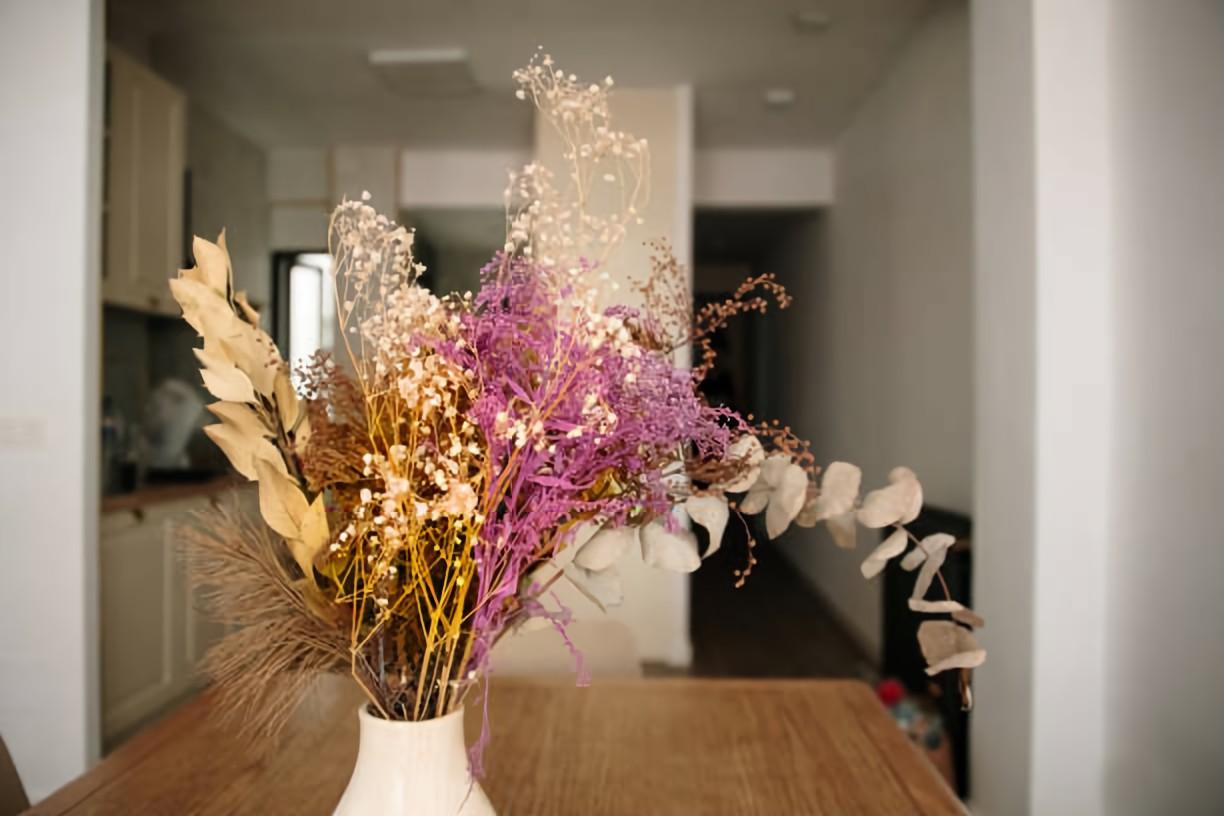
Criteria for Selecting Flowers for Drying
Choosing the right flower isn't just about personal preference; certain blooms are better suited for drying than others. Look for flowers that have a robust structure and vibrant colors. Delicate flowers may not hold up well during the drying process, while those with thicker petals and strong stems generally fare better.
Tips on Cutting and Preparation
Once you've selected your flowers, the next step is the cutting and preparation. It's generally best to cut flowers in the morning after the dew has evaporated but before the heat of the day sets in. Use sharp scissors or pruning shears for a clean cut. Remove excess foliage and immediately place the cut stems in water until you're ready to begin the drying process.
Traditional Drying Methods
Air Drying
Hanging Upside Down
One of the oldest and simplest methods of flower drying involves hanging bunches of flowers upside down in a dry, well-ventilated area. The gravity helps the flowers maintain their shape, while the air circulation facilitates the drying process. This method is ideal for flowers with sturdy stems and petals, like lavender and roses.
Laying Flat
For flowers with delicate petals that may lose their shape when hung, laying them flat on a wire rack or similar surface can be effective. However, this method can take a bit longer and may not produce as vibrant colors as other techniques.
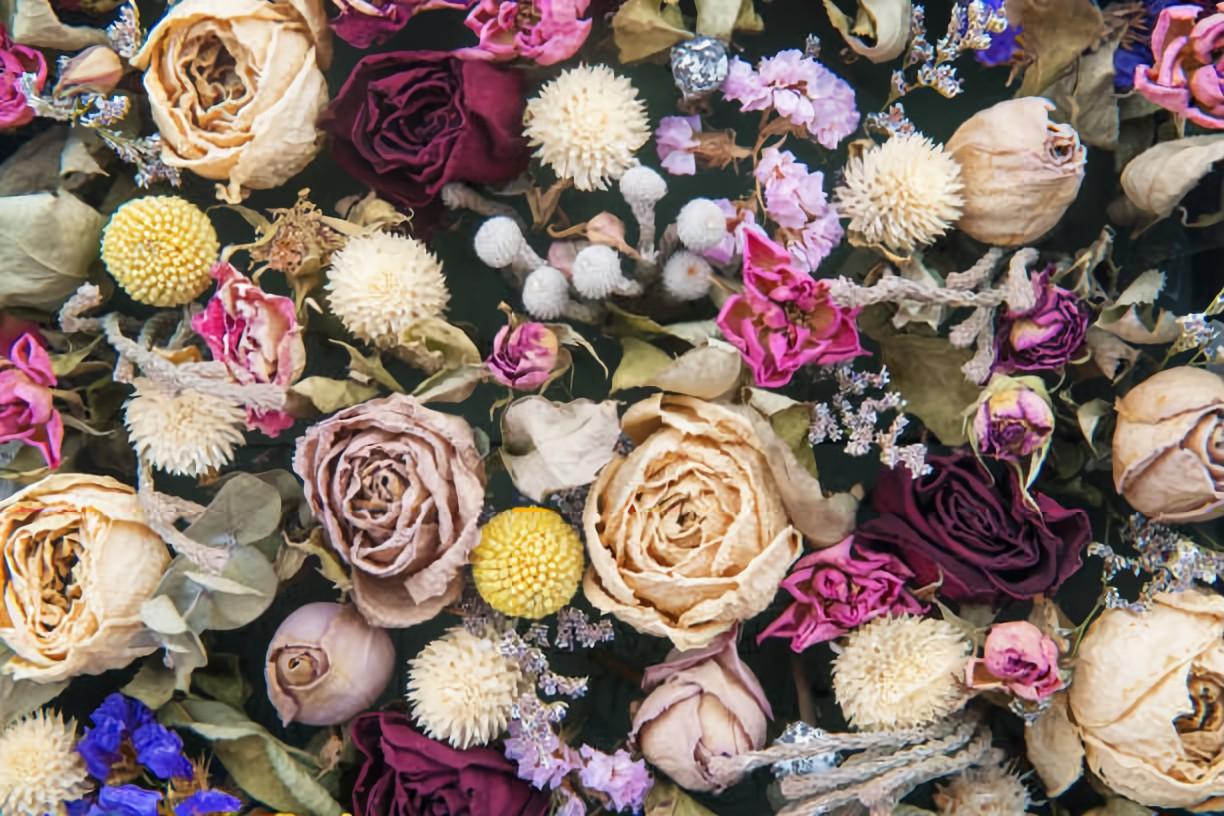
Pressing
Pressing is another traditional method particularly well-suited for flowers with flat faces like pansies or violets. By placing the flowers between sheets of paper and then applying pressure (often with the help of heavy books or specialized presses), you can create beautifully preserved specimens perfect for scrapbooking, framing, or other art projects.
Desiccants (Silica Gel, Sand, etc.)
Desiccants, such as silica gel or fine sand, can be used to dry flowers carefully in a controlled environment. This method preserves the flower's shape and color, but it requires a bit more preparation. Flowers are typically buried in the desiccant in an airtight container and left to dry for a few days to a couple of weeks.
Modern Techniques
Microwave Drying
Microwave drying is a quicker alternative that can produce great results in a fraction of the time. This method of drying flowers involves placing the flowers you have bought or gathered into a microwave-safe (ideally BPA free) container with a desiccant, such as silica gel. The desiccant absorbs the moisture from the flowers, causing them to dry. The microwave is used to heat the container, which helps to speed up the drying process. It's crucial to monitor the flower closely to prevent overheating and loss of color.
Oven Drying
Oven drying is another modern twist, although it tends to be less precise than other methods. Flowers are placed on a baking sheet in an oven set at the lowest possible temperature. Because ovens can vary, it's essential to keep a close eye on the drying process to ensure the flowers don't burn or lose their color.
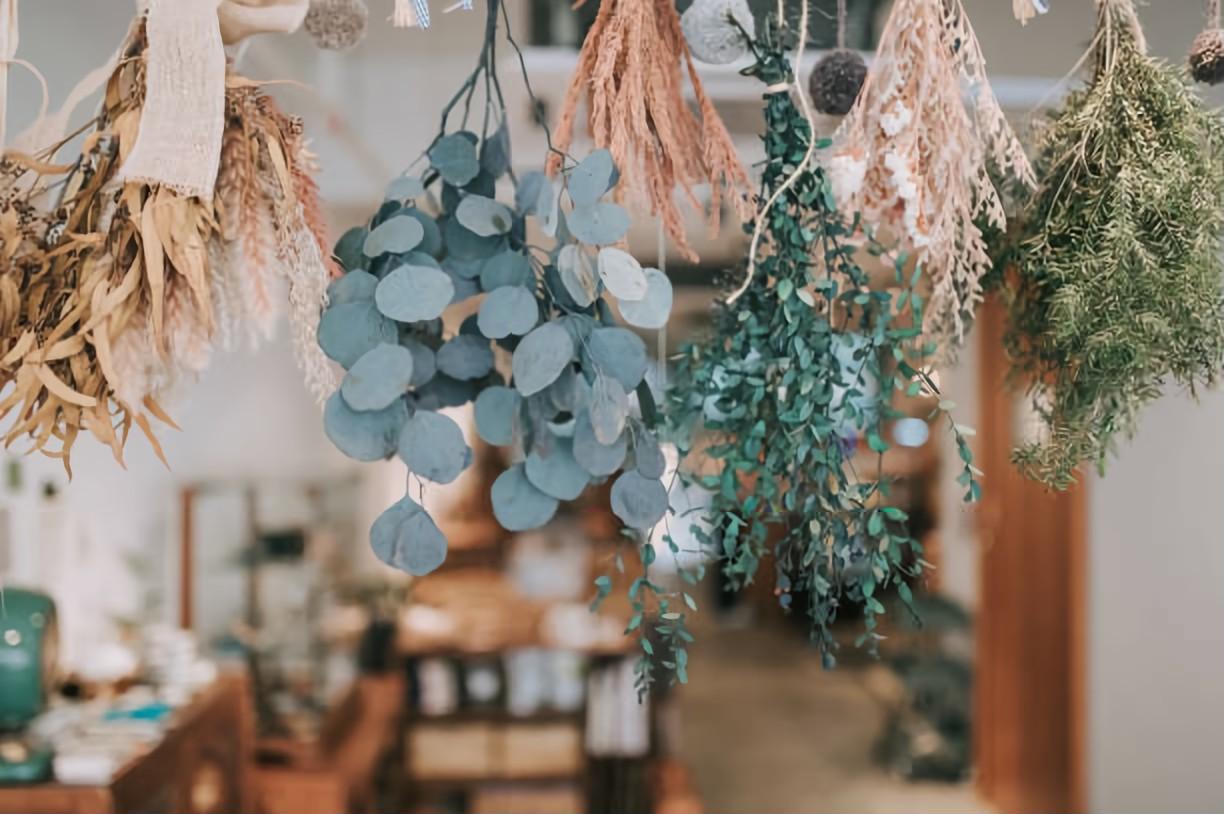
Freeze-Drying
Freeze-drying is the most high-tech method, requiring specialized equipment. This method involves freezing the flowers and then slowly removing the moisture under a vacuum, resulting in extremely well-preserved blooms. Freeze-drying retains the flower's shape and color exceptionally well but can be costly and less accessible for the average enthusiast.
Creative Approaches
Mixed Media with Dried Flowers
Dried flowers offer a unique texture and aesthetic that can be integrated into various forms of art. Imagine a canvas painting accentuated with dried blooms, or a photo collage that incorporates pressed petals. The possibilities are endless, and the added element of natural beauty can elevate any art piece.
Incorporating Dried Flowers in Modern Art
The realm of modern art has increasingly welcomed unconventional materials, and dried flowers are no exception. Whether as part of an interactive installation or a focal point in a mixed-media sculpture, dried flowers bring a touch of ephemeral beauty to contemporary artistic expressions.
Unique Display Ideas
Thinking outside the box for displaying your dried flowers can be just as rewarding as the drying process itself. From creating intricate wall hangings to filling clear, geometric terrariums, your options are only as limited as your imagination. Even traditional settings like vases can be elevated with a creative arrangement or by adding other natural elements like dried grasses or driftwood.
Preservation and Care
How to Maintain Color
Once you've invested time and effort into drying your flowers, maintaining their color is the next step. Some options include storing the flowers away from direct sunlight and using sealants or sprays specifically designed for dried flowers.
Best Storage Practices
Dried flowers are delicate and need to be stored in a cool, dark, and dry place to last for a long time. Some people like to store them in airtight containers to keep out moisture and dust.
Longevity and How to Refresh Dried Arrangements
With proper care, dried flowers can last for years. If they begin to look a little tired, gentle dusting or even a light spritz of floral scent can bring some life back into your arrangements. Always handle with care to avoid breaking the brittle petals and stems.
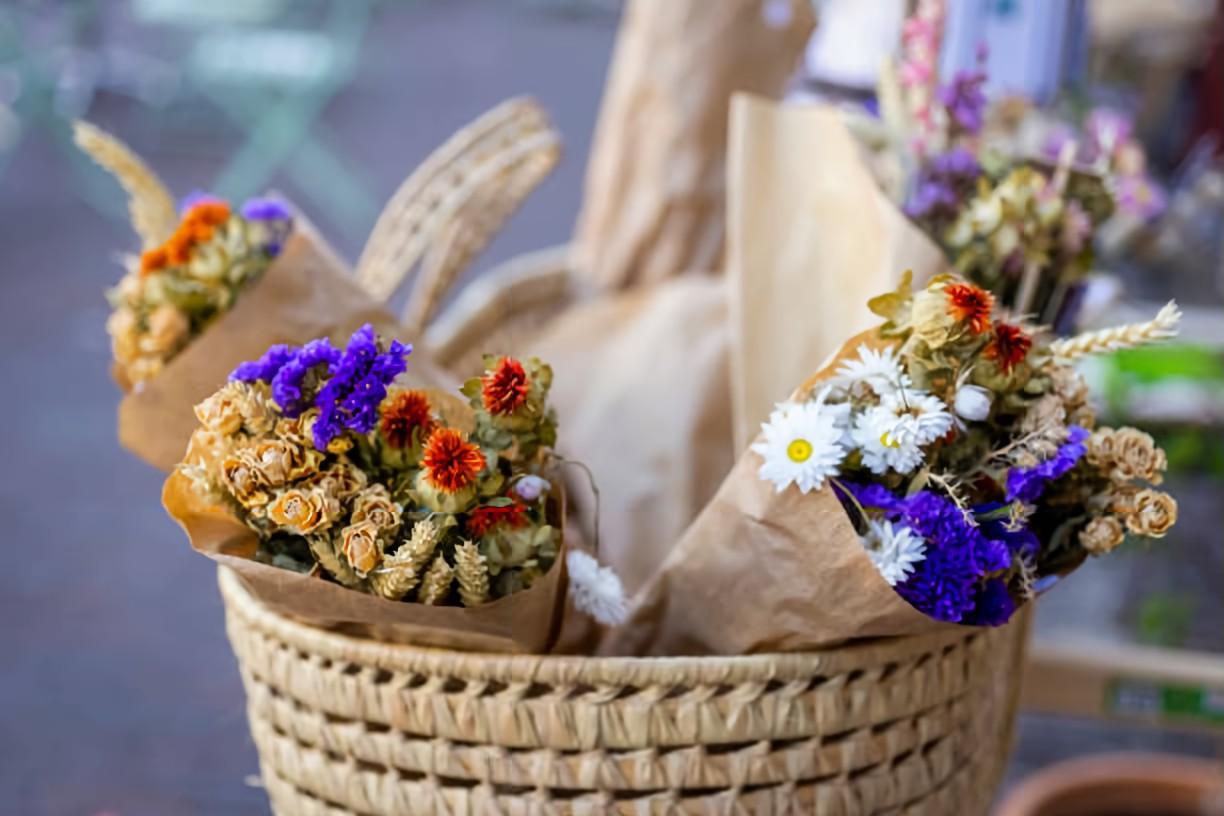
Sustainability and Ethics
Environmental Considerations
While drying flowers can be a beautiful and sustainable way to preserve their beauty and extend their life, it's important to be mindful of the environmental impact of the drying method you choose. The energy used in modern drying techniques and the possible pesticides on non-organic flowers are factors worth considering.
Ethical Harvesting
If you're foraging for wildflowers to dry, always follow ethical guidelines and local regulations. Never take more than you need, and be sure to leave no trace of your activities to preserve the natural habitat for others.
DIY Options for Sustainable Flower Drying
Sustainability and flower drying can go hand in hand. Consider air drying as a low-energy option, or get creative with DIY desiccants like rice or cornmeal. Additionally, focus on locally sourced flowers to reduce the carbon footprint associated with transportation.
Summing Up
Summary of Key Techniques and Tips
From traditional methods like air drying and pressing to modern techniques such as microwave and freeze-drying, the options for preserving flowers are abundant. The right technique often depends on the type of flower, your artistic intent, and the resources you have at hand. Don't forget to focus on proper storage and care to ensure the longevity of your blooms.
The Significance of Dried Flowers in the Artistic and Cultural Context
Dried flowers have been cherished by people of all cultures and time periods for their beauty and ability to capture a moment in time. Dried flowers can be used in many different ways, from creating modern art pieces to adding a touch of nature to your home decor. They offer a unique way to express oneself by merging nature, art, and personal sentiment.
Flower drying isn't just a skill; it's an art form ripe for experimentation. So why not dive in?Whether you're a beginner or a seasoned artist, I encourage you to experiment with dried flowers and see what you can create. Dried flowers are a versatile material that can be used to create a variety of beautiful and meaningful artworks.
Additional Resources
Books and Journals on the Subject
- "The Art of Drying Plants and Flowers" by Mabel Squires
- "Flowers: The Complete Book of Floral Design" by Paula Pryke
- "The Journal of Dried Flowers" (Quarterly Publication)
Online Tutorials and Workshops
- Skillshare courses on flower drying and arrangement
- YouTube tutorials from experts in the field
- Various online forums and communities dedicated to flower preservation
Inspirational Artists and Craftspeople in the Field
- Mary Delany, known for her intricate paper collages often featuring dried and pressed flowers
- Ignacio Canales Aracil, a Spanish artist who creates sculptures from dried flowers
- Flora Forager, a botanical artist who crafts images out of foraged materials, including dried flowers
